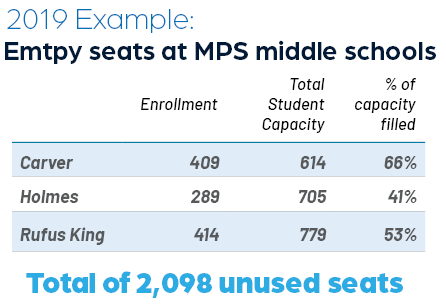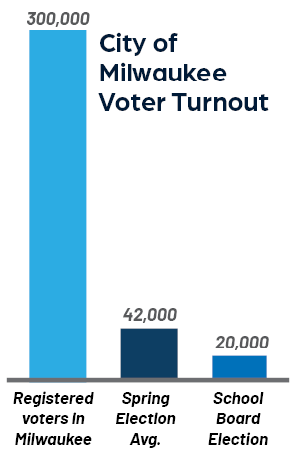Education recommendations > Revitalize MPS
Revitalize MPS
|
Parent choice has resulted in a historically smaller MPS. Now MPS must reassess its future in delivering quality education.
The Milwaukee Public Schools are foundational to the delivery of K-12 education in the city. Some 58,000 students are educated in 156 school buildings across the district.
What has changed for the foreseeable future is the role MPS plays. It is no longer the only source of public education, but part of a system of publicly funded parent choice. Parents can utilize public funding to attend MPS, independent charter and private schools participating in the MPCP program. Today, 45% of the 114,048 students accessing public funding attend a school other than MPS. Many students move between these options over the course of their K-12 career, but MPS enrollment has been on a steady decline for 20 years. MPS needs a strategic plan that revitalizes the academic outcomes of the students it’s educating. This plan will require both the recognition of the reality of parent choice, and the implementation of changes that best utilizes resources for improving student outcomes. |
Summary of recommendations featured below.
|





